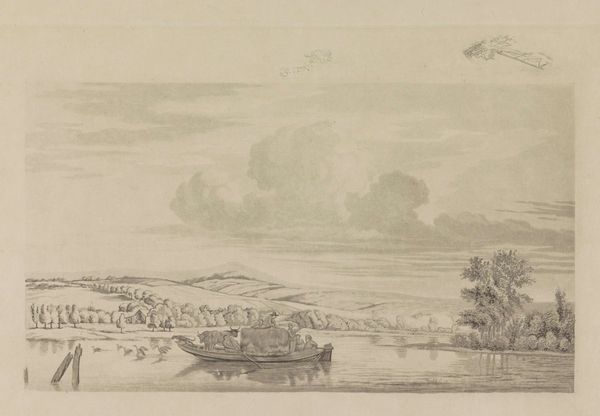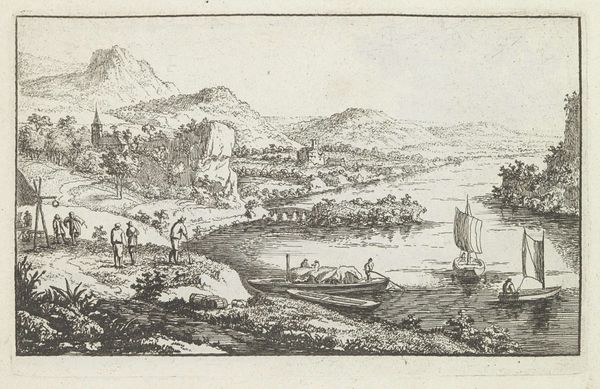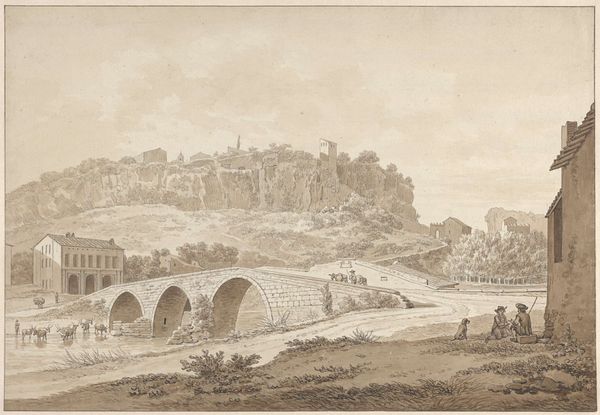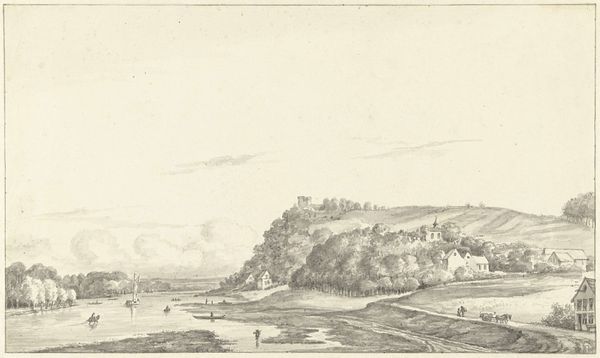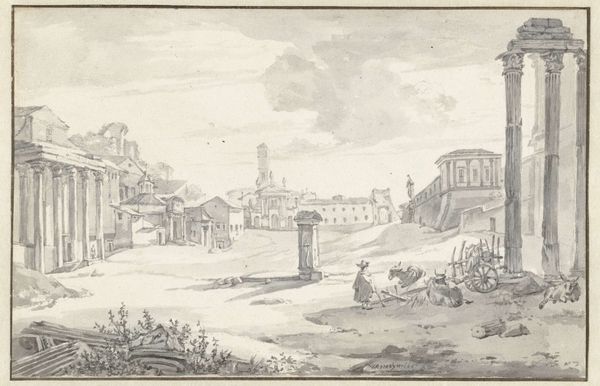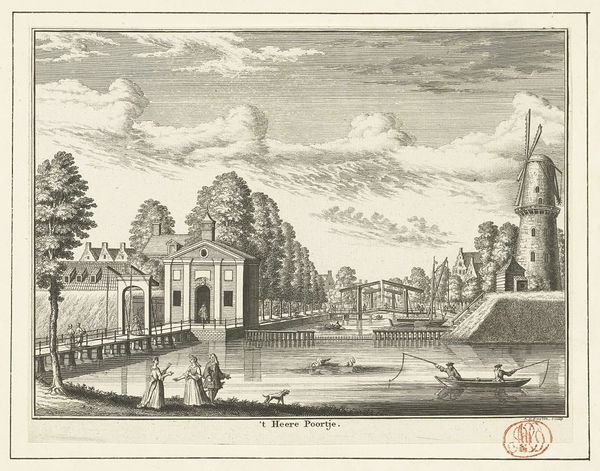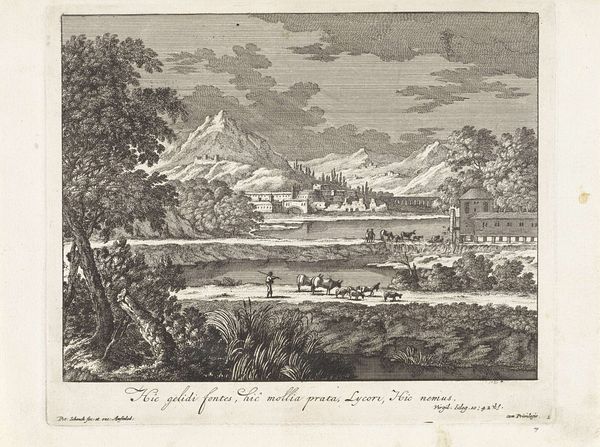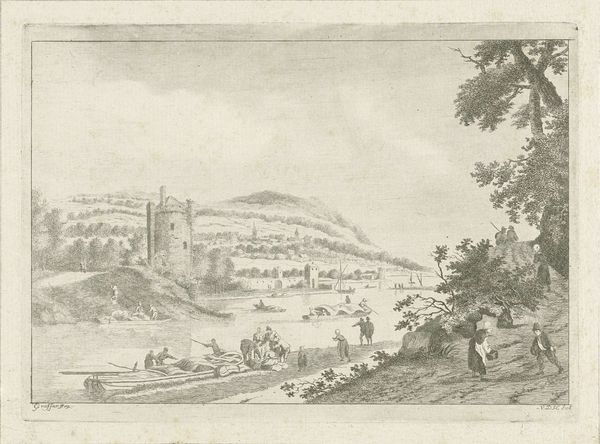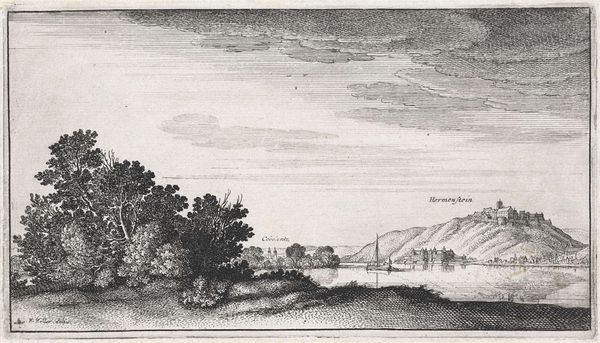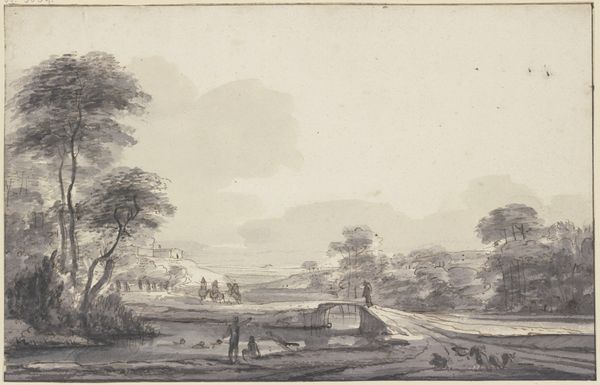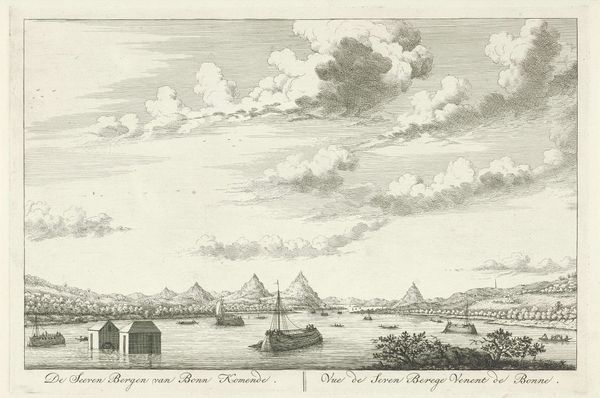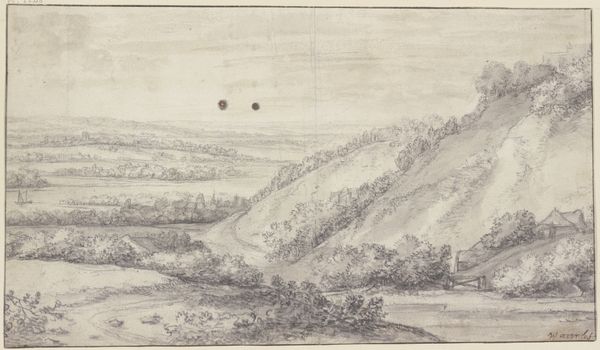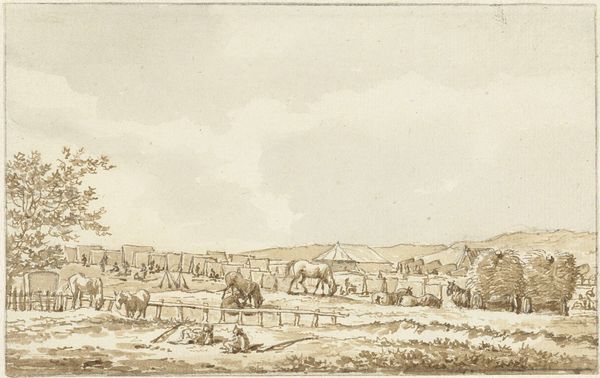
drawing, ink, pen
#
drawing
#
baroque
#
dutch-golden-age
#
landscape
#
ink
#
pen work
#
pen
#
cityscape
Dimensions: height 284 mm, width 411 mm
Copyright: Rijks Museum: Open Domain
Editor: So, here we have Jan de Beijer's "View of the City and Castle of Namur," created around 1745. It's an ink and pen drawing. I’m struck by how detailed it is – all those tiny strokes create this expansive cityscape. What stands out to you? Curator: I'm immediately drawn to the materials themselves: pen and ink. Think about it – De Beijer is using readily available, almost quotidian tools to depict what was likely commissioned work, promoting a specific image of Namur’s power and its place within trade networks. The labor involved is considerable. Editor: I hadn't thought about that. The sheer amount of pen work does seem significant. How does that relate to the context of the time? Curator: Precisely. This drawing wasn't just about artistic expression. It's a commodity, documenting a strategic location. Look at the details: the bridge facilitating trade, the castle representing power. Even the choice of medium, pen and ink, speaks to reproducibility. Prints could be made from this. Editor: So, it’s less about the singular artistic vision and more about the socioeconomic factors? Curator: Not exclusively, but let’s consider the consumption of such images. Who was buying them? What purpose did they serve in solidifying ideas of territory and commerce? Was this accessible to common people? Or more aligned with merchant or ruling class consumption? These aspects of art making often go unacknowledged. Editor: I see your point. I was focusing on the aesthetics, but it's fascinating to think about the drawing as part of a larger system of labor, production, and power. Curator: Exactly! The beauty is undeniable, but it's crucial to understand how that beauty was produced and for whom. Now, do you see that labor in the landscape reflected in any of the materials he employed in this piece? Editor: Absolutely. Looking closer, it’s obvious. Thanks for making me look at it that way. Curator: My pleasure. Thinking about the 'how' and 'why' often uncovers richer meanings embedded within the 'what'.
Comments
No comments
Be the first to comment and join the conversation on the ultimate creative platform.
